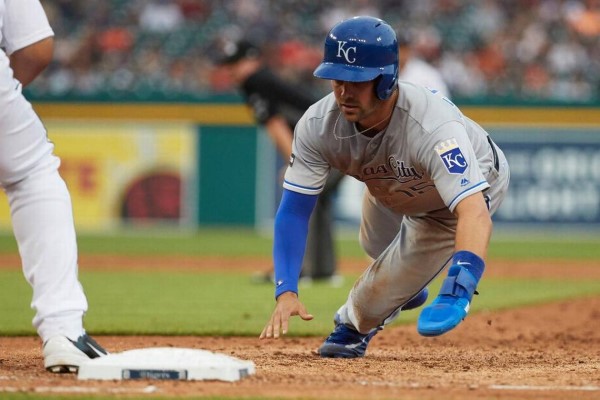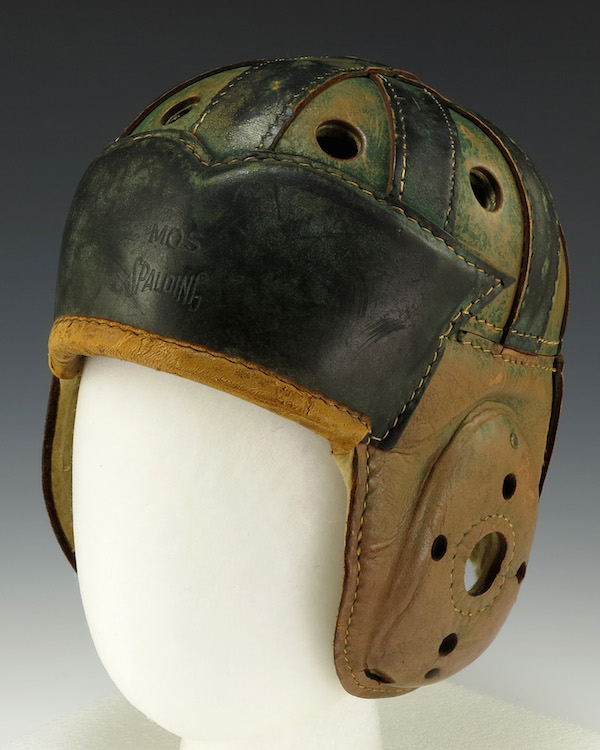Dear Sports Fan,
I was watching a playoff baseball game the other day and noticed that once players get on base, they put on (don’t laugh) what looks like an oven mitt on one hand. Why do base runners in baseball wear an oven mitt??!!
Thanks,
Estelle
— — —
Dear Estelle,
I’m not laughing! I’ve noticed that too. What we are looking at when we see a base runner put on what looks like an oven mitt is a new evolution of safety equipment. The oven mitt — called, unsurprisingly, a sliding mitt, is a clever combination of two separate pieces of safety equipment that some baseball players wore to prevent injuries when sliding into a base.
Baseball is, on the whole, a very safe sport. The story from the late 1800s when both sports began in earnest in America is that baseball was played by the working class, who couldn’t afford to injure themselves, while football was played by the upper class whose lifestyle could sustain frequent broken bones. Perhaps the most common danger in baseball is sliding into a base. The speed with which players slide, combined with the great need to touch the base and keep touching it before the fielder gets the ball and steps on the base or tags them, leads to jammed or broken fingers and wrists and even torn wrist cartilage. More rare but still possible is a fielding player coming down on a runner’s hand with their baseball cleats. Ouch!
Baseball players have long had strategies to deal with these risks. Before the sliding mitt, players were taught to hold their batting gloves in their hands or even a fistful of dirt as a reminder to keep their hands in the air for as much of the sliding process as possible. For players who favor protective equipment, a slider’s wrist guard is and has been readily available for years. Like something you would have worn in the late 1990s when you learned how to roller blade, the wrist guard keeps the arm from bending back when it hits the base. The other element that the sliding mitt incorporates is rigid, often fiberglass, protection for the fingers. This evolved from a cast that Kansas City Royals player Scott Podsednik started wearing in 2008. Here’s Podsednik explaining it to the brilliant blog uni-watch:
It’s basically just a hard cast that I had fitted to my hand during the ’08 season. I had an injury to my thumb in ’03, and I started wearing a hard plastic piece to protect my thumb, for sliding head-first. I wore that and had no problems with it until ’08, when I ended up breaking my pinkie finger sliding into second base. Then I got with a hand therapist and she came up with this cast to protect all my fingers, including the thumb. She came up with it, it has worked perfectly, and I haven’t had any problems since.
After making fun of him, other players on his team and around the league began joining Podsednik in protecting themselves. Eventually, the combination rigid glove and wrist guard evolved into a single piece of equipment: the sliding mitt! The version that Whit Merrifield wears has metal rods to protect the fingers and a velcro strap to keep it from sliding off. Rajai Davis, who told MLB reporter Jason Beck that his mitt is “good for baking… baking on the bases.” also insisted that his sliding mitt had minimal padding at the tips of the fingers. Any more and it would give him an advantage by extending his reach toward a base and violate Major League Baseball glove regulations that apparently apply to mitts as well as gloves with fingers.
The sliding mitt has definitely become more common in the major leagues over the last few years. Soon, if the entrepreneurs who bought slidingmitt.com have their way, we’ll see sliding mitts on youth baseball fields across the country.
Thanks for reading,
Ezra Fischer


